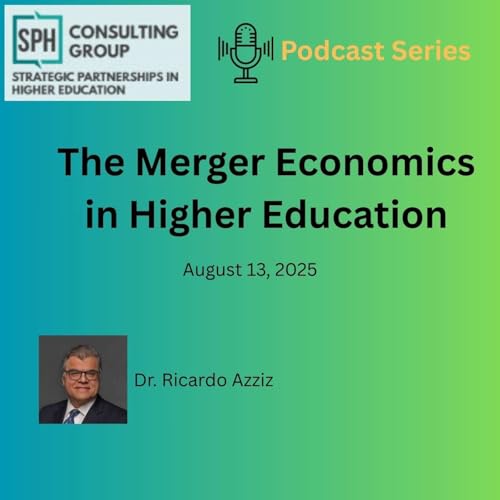Here are the questions, Dr. Azziz addressed during this podcast episode.
1. The case you used for this competency ( Sensing and driving the pace of change) was the merger of Kendall College and Louis National University. Share with our listeners the need for speed in merger in higher education.
2. Talk about incrementalism and how it is not necessarily a good approach for colleges considering mergers.
3. The need for speed. P. 107 Box 6.2 Let’s talk about a few of your recommendations.
a. Delaying implementation furthers anxiety and discomfort on campus and throughout the community
b. a lack of speed simply favors forces of opposition the environment will change while institutional leaders make incremental decisions
c. speed minimizes the risk of burnout and change
4. p. 109 How is setting the drum beat that you reference set up. You note that leaders undertaking big scary change must recognize that in the usual course of business a college or university uses incremental approaches to change things. And you write that kind of approach won't necessarily work for mergers
Competency 4: Prioritizing and driving communication
5. Talk about the best communication approach with which to engage the variety of stakeholders involved in any merger
6. You note that the first phase of a merger will involve one-on-one conversations. This phase will be carried out in relative confidentiality and only a limited number of individuals privy to the discussions. Talk first about the confidentiality piece. Then talk about transitioning to selling the vision that you note involves “creating urgency without creating chaos”.
7. You have a section on page 128 entitled the ‘opprobrium of being acquired’ and you note that when a college or university is “being acquired” (you put that in quotes) its impact may be ego shattering for the institution and for the individuals who comprise that college. Step listeners of the podcast through a communication process to help buffer that being acquired mindset.
8. Finally, let's talk about the media. We know in general that the media focuses on controversial, negative, and emotional stories. Step us through some guidance you would provide to college leaders, College Board members on how to prepare their interactions with the media - knowing that most stories will be on the negative side in regards to proposed mergers
 2025/11/0918 分
2025/11/0918 分 20 分
20 分 28 分
28 分 2025/10/2228 分
2025/10/2228 分 2025/08/1624 分
2025/08/1624 分
